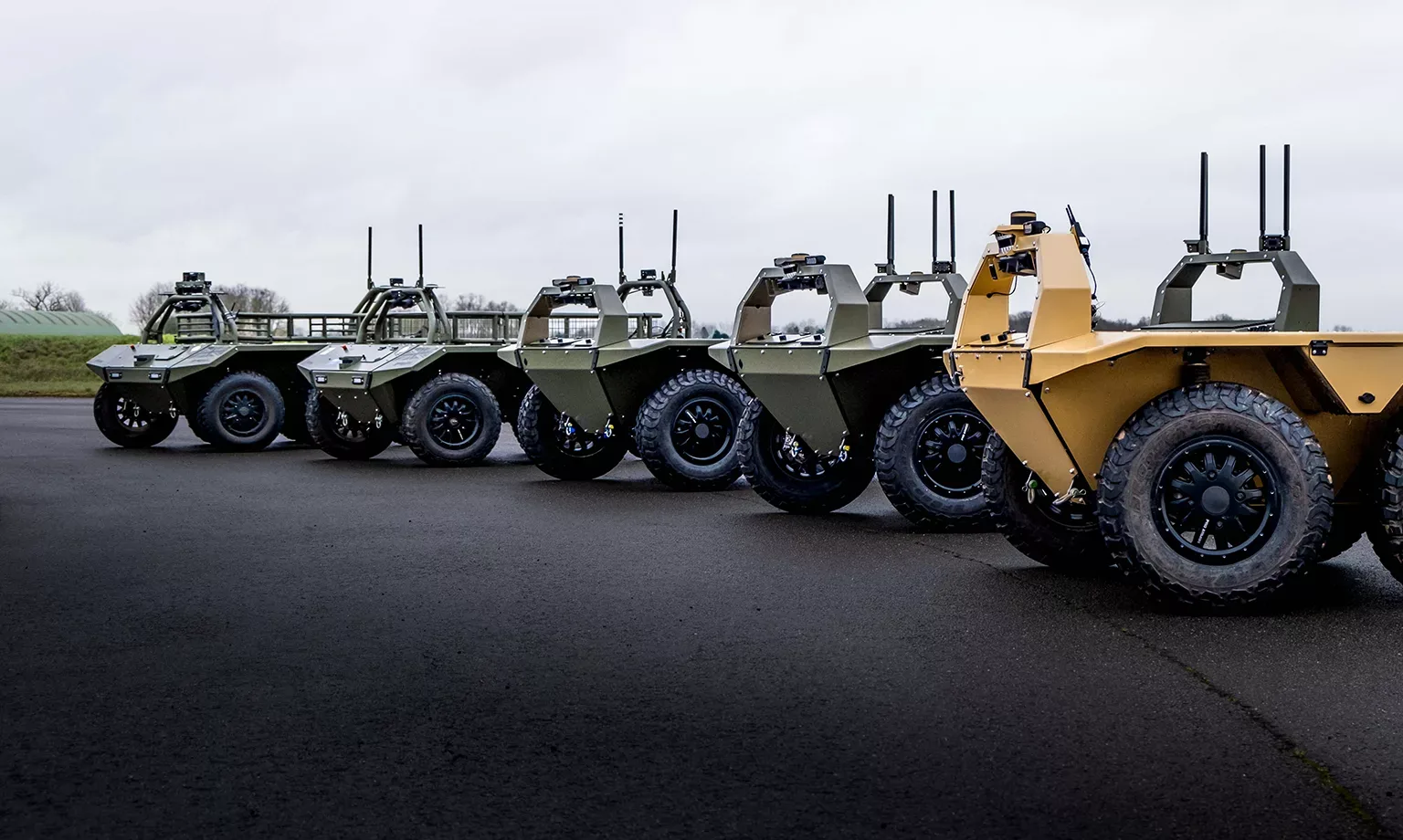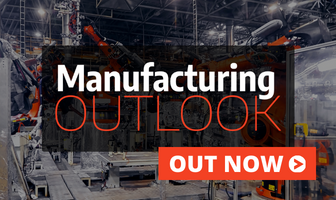As a global leader in cutting-edge uncrewed vehicle technology, IDV Robotics is at the forefront of innovation in robotics and autonomous systems. Dr Geoff Davis, Managing Director, highlights how the company intends to become an indispensable aid to the defence and civil sectors in the UK and internationally.
TITANS OF UNCREWED TECHNOLOGIES
The UK Ministry of Defence (MoD) is a critical cornerstone of the country’s global reach and international integrity.
Inherently linked to the UK MoD and the future innovation of its military vehicles is IDV Robotics, who is at the forefront of uncrewed vehicle technology.
“The UK MoD has been a very good customer for us over the years. We’ve been a trusted research partner working particularly closely with the Defence Science and Technology Laboratory (Dstl) as well as other parts of the UK MoD on the development of uncrewed vehicles and associated robotic and autonomous systems technologies,” introduces Dr Geoff Davis, Managing Director.
The business activity was first established in 2008 as a research activity within MIRA, a UK-based research, engineering, and development company that was experimenting with autonomous vehicle technology at the time. This was just after the infamous Defense Advanced Research Projects Agency (DARPA) challenges and the spike of interest and activity in uncrewed vehicles.
“Whilst initially automotive focused, we soon identified the opportunity for the defence sector and the team participated in a UK-based competition with its autonomous vehicle technology, known as the MoD Grand Challenge, subsequently winning an award for best use of autonomy,” Dr Davis explains.
For the project in question, the company designed a small, autonomous vehicle that was used to demonstrate the potential of autonomy in a mixed environment.
Following the success of this operation, IDV Robotics began converting donor vehicles with uncrewed technology so they could be operated remotely or by teleoperation, further proving the potential of the technology in a defence environment.
In 2010 the company experienced a key turning point in its trajectory when the team was awarded a contract to help develop uncrewed vehicles for use by the UK MoD in Afghanistan. Known as Project Panama, the team and its technology were instrumental in building a fleet of vehicles for detecting improvised explosive devices (IEDs) that were causing many casualties for the armed forces at the time.
“As part of a bigger, protected mobility fleet of vehicles for route clearing, this project was vital to building our relationship and reputation for uncrewed vehicles with the UK MoD.”
“It was our spotlight moment; this is when we became infamous for uncrewed vehicle technology and our capabilities really grew and accelerated,” comments Dr Davis.
Upon completing Project Panama, the company commenced various R&D exercises for the MoD and other overseas clients, developing uncrewed systems for existing military vehicles and subsequently for its own dedicated uncrewed ground vehicle platform, which has subsequently evolved into the VIKING vehicle. Using the autonomous control equipment that has been developed, refined, and tested during this period, the VIKING vehicle is capable of operating remotely or autonomously, beyond the line of sight, and executing critical missions and tasks as required by the user.
MIRA was then sold to the HORIBA Group to become HORIBA MIRA. Subsequently, the decision was made to extract the uncrewed ground vehicle business from the organisation to become its own entity, eventually becoming a part of Iveco Defence Vehicles (IDV) in February 2023, now known as IDV Robotics.
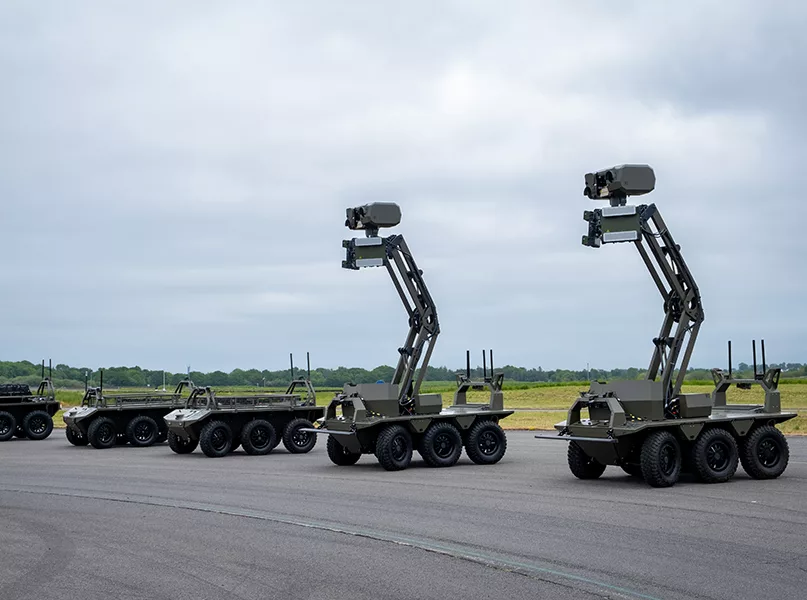
DEVELOPING THE DEFENCE SECTOR
Based in Northern Italy, IDV is a specialist defence vehicle manufacturer and a division of the Iveco Group. Whilst Italian-based, its footprint spans the rest of Europe, as well as North and South America.
“With a long history in the supply of a wide range of military vehicles, IDV is now witnessing the growing interest in uncrewed vehicles in a defence environment and the increased opportunity for more capable ground vehicle solutions.
“In parallel, the company has been growing its international presence and has historically had little activity in the UK market. Combined, these factors made the case for investment in what is now IDV Robotics,” contextualises Dr Davis.
As a small to medium-sized enterprise (SME), IDV Robotics currently comprises 30 employees and is projected for progressive growth, both in the domestic market and abroad, by building teams with its parent company.
“We’ll be looking to expand into other markets, including the US, so that in a few years we will have capable teams outside the UK to enhance our reach and engagement with global customers.”
The company’s decided growth into the international market begs the question – what is the UK Government’s industrial strategy to enhance the capabilities of defence uncrewed technologies and support the growth of the industry?
“We are a high-tech, high-value company with incredibly bright people who are developing technology that could really make a difference to any nation’s defence capability. Due to its incredibly high value, there’s huge potential for the UK to build expertise and industry in this space and become a market leader,” highlights Dr Davis.
This is particularly pertinent given the defence sector has received a huge amount of international interest in recent years. The opportunities afforded by uncrewed vehicle technology not only have the potential to make the MoD more effective and efficient, but also to save lives.
“It means that vehicles can undertake dangerous tasks where you wouldn’t want a member of your team in that situation.”
“We are a high-tech, high-value company with incredibly bright people who are developing technology that could really make a difference to any nation’s defence capability”
Dr Geoff Davis, Managing Director, IDV Robotics
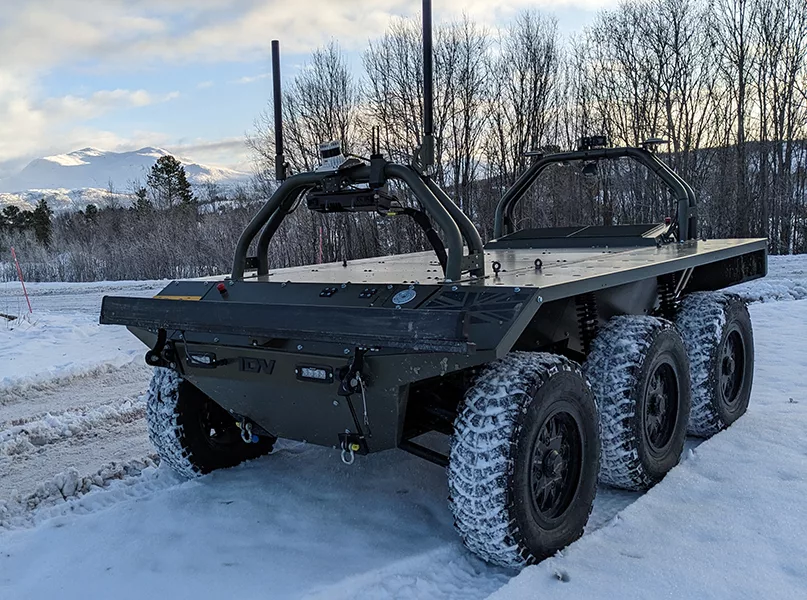
ENACTING A LONG-TERM SOLUTION
Dr Davis has witnessed the UK MoD become very active in recent years in the R&D of uncrewed vehicles, which has allowed IDV Robotics to support the development and trial of the technology, culminating in the 2022 publication of its robotics and autonomous systems (RAS) strategy.
Yet, despite the spike in activity, there has been a recent slowdown in the UK as priorities and finances are allocated elsewhere.
“As a result, we’ve really noticed that European nations and other NATO allies are catching up. Some of them are increasingly active in uncrewed vehicle technology – investing in R&D programmes and trials.
“As the technology, understanding, and expertise improves, we expect to see nations looking to use this technology as part of their regular operations. I don’t expect to see fully autonomous unbounded solutions being deployed in the immediate term, as the technology is not sufficiently mature, but there are many use cases where autonomy can be effective.
“Our challenge is to identify these scenarios and have a laser focus on developing the technical solutions. Once usage in these scenarios starts to increase, confidence will improve, the technology will accelerate, and we can expect to see wider acceptance. So, whilst the UK has been active to date, I do fear that it risks dropping behind,” highlights Dr Davis.
“We appreciate the flexibility of the regional SMES that we work with; they have been very proactive in helping us quickly evolve to our ever-changing needs”
Dr Geoff Davis, Managing Director, IDV Robotics
CREATING UNSTOPPABLE TECHNOLOGY
IDV Robotics is heavily invested in the latest innovations and enabling technologies such as AI, sensor, and computing capabilities. The company works hard to remain at the forefront of this rapidly changing industry.
For example, computational technology, which is key to the future success of uncrewed vehicles, can become obsolete every 18 to 24 months, with the next generation of technology becoming more capable and powerful.
A key driver of change in computational hardware is the growth of AI, which IDV Robotics is embracing to improve the performance of its uncrewed systems.
“We use AI to ensure our autonomous technology is the best it can possibly be, as well as integrating vehicles with payloads that allow us to achieve some very interesting capability,” adds Dr Davis.
A particular specialism of the business is its unique, patent-protected technology that allows it to operate in a global navigation satellite system (GNSS) denied environment. This means that when a vehicle loses connection with GPS, the vehicle is still able to locate itself.
As an SME, the company would not be able to achieve its technological expertise without a solid and flexible supply chain consisting of both local and international partners.
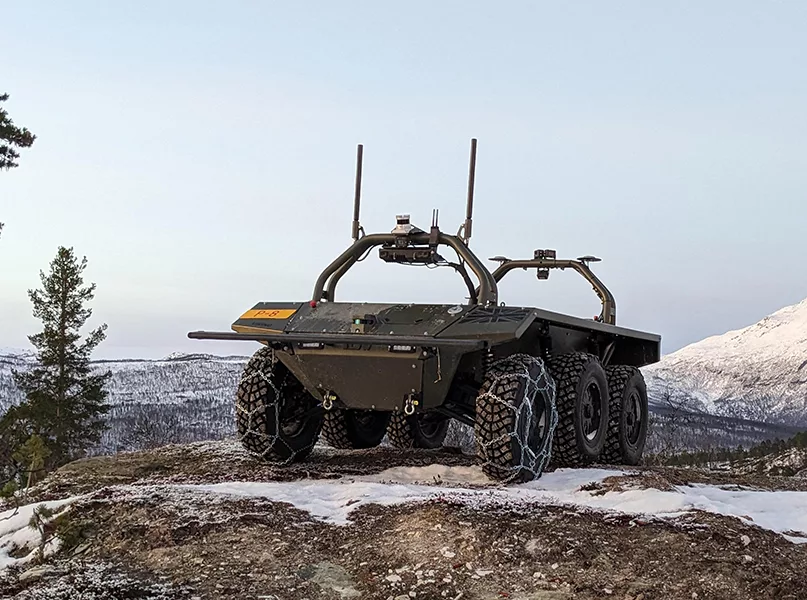
Unfortunately, much of the computing hardware and sensor technology utilised by IDV Robotics is supplied from outside the UK, as there are limited options for this equipment, which is a sad reflection on the UK supply chain.
However, for the more traditional platform elements, such as the vehicle chassis and powertrain, the company has a predominantly UK-based supply chain.
“We appreciate the flexibility of the regional SMEs that we work with; they have been very proactive in helping us quickly evolve to our ever-changing needs,” Dr Davis tells us.
When looking towards the coming year, IDV Robotics has three main priorities. Firstly, the company wishes to continue to evolve its technology, improving the performance and cost-effectiveness of its uncrewed solutions.
Secondly, the company wants to enhance its successful presence overseas, winning major contracts across the EU and widening its customer base.
Finally, given IDV Robotics’ journey in recent months and its growth plans, the business endeavours to create the best working environment possible under new ownership.
“We ask ourselves: how do we continue to invest and create the best working environment to make this a place where people really want to work,” closes Dr Davis.



